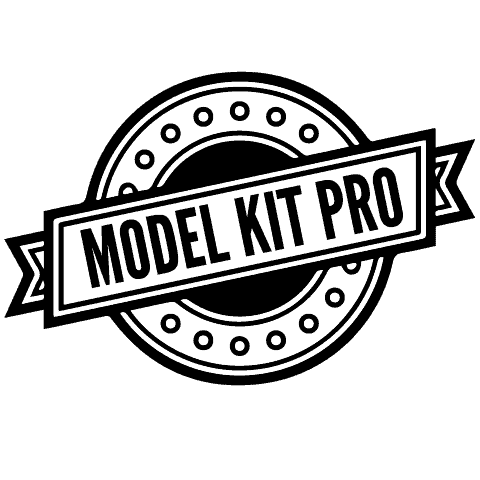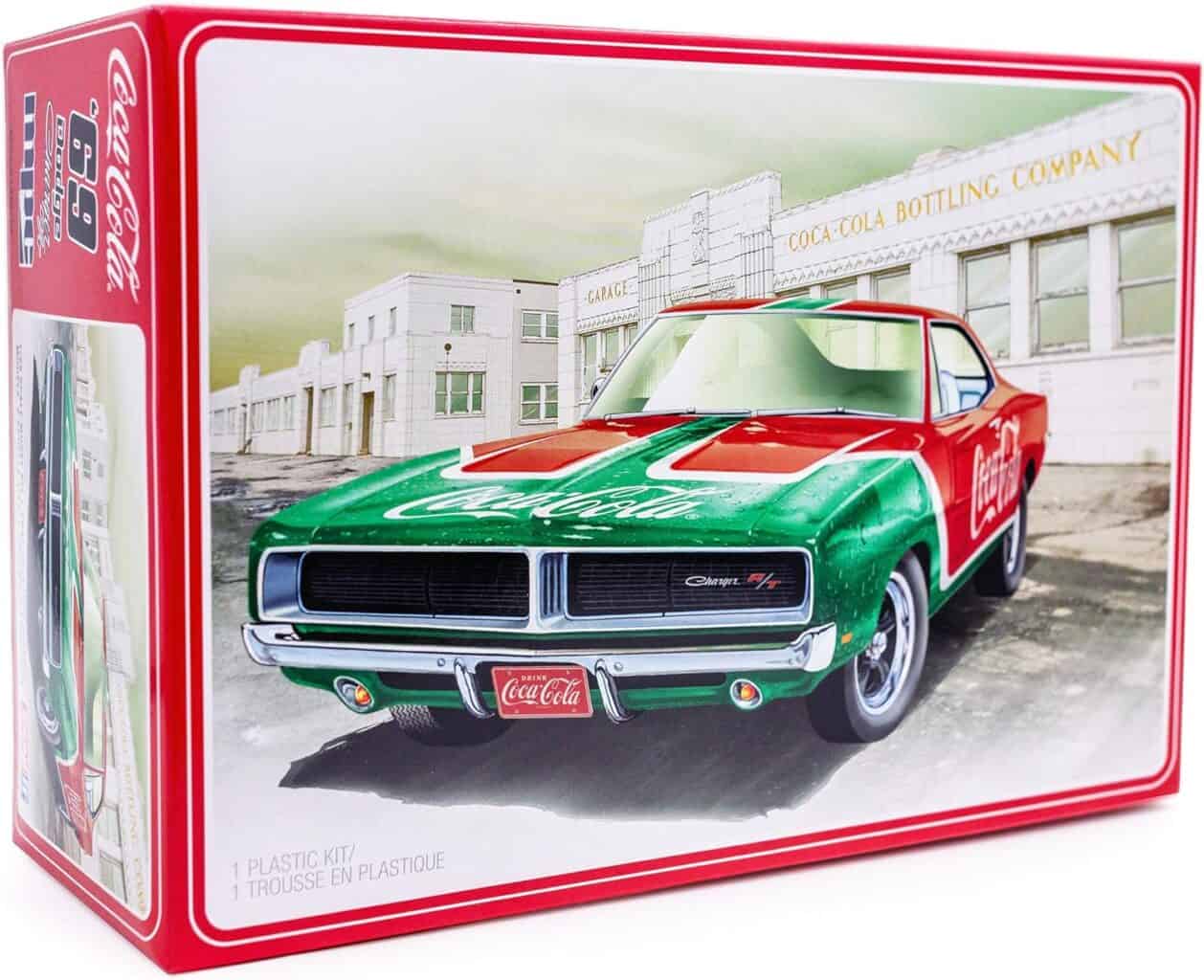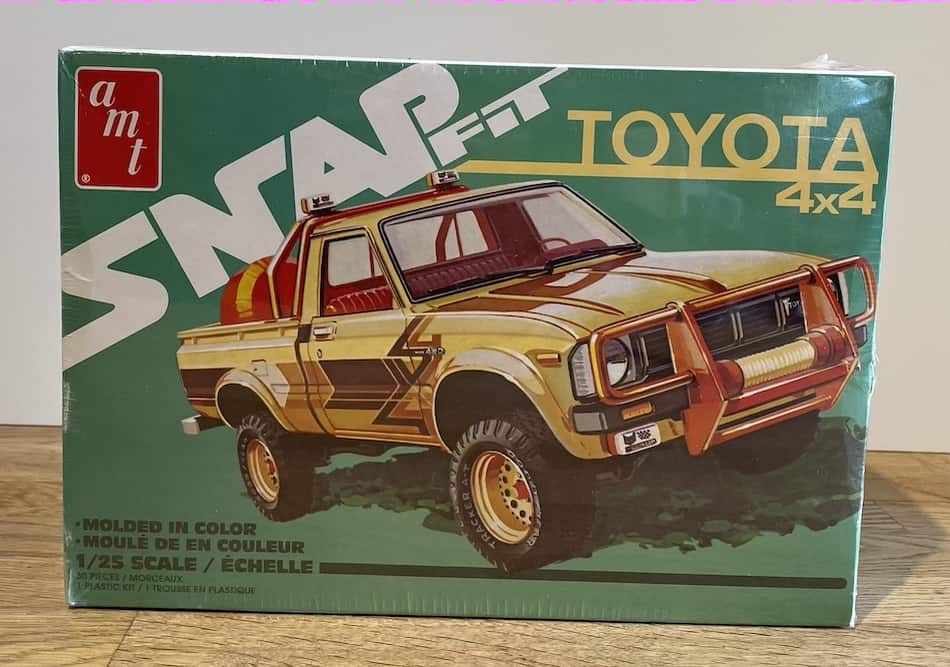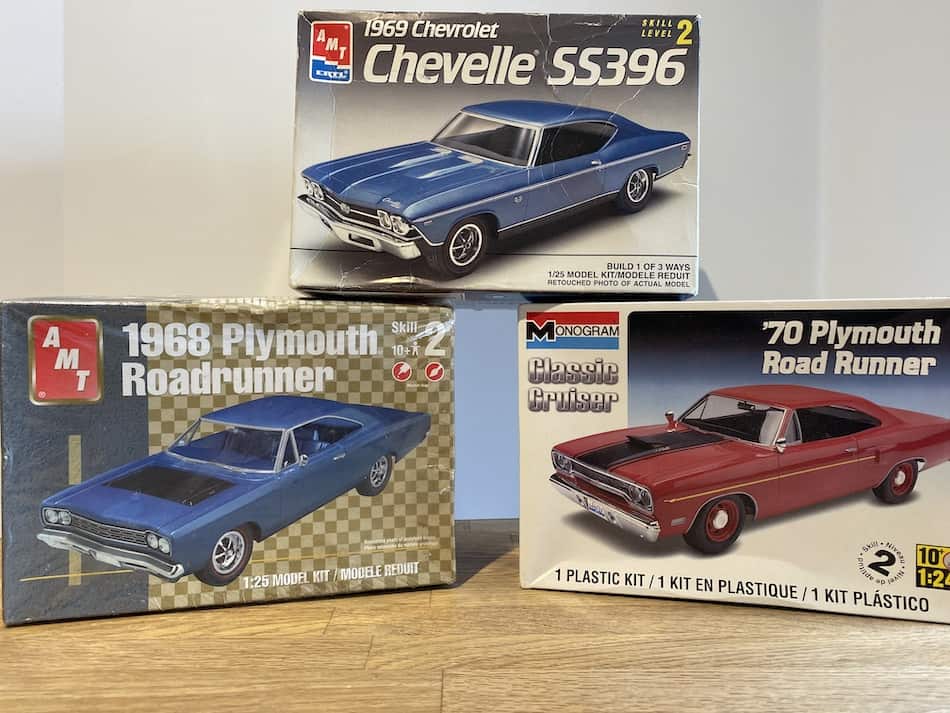Model car kit building can be a fun and satisfying hobby for people of all ages. The first model kit for an eight year old will have a lower difficulty level than a model kit for an adult doing their first model.
How do you pick model car kits for beginners? Model car kits come in different scales. Kits are in skill levels from one to five, with one being the easiest and five requiring the most skill to complete. The easier skill levels most often do not require glue or paint, and snap together while the more skilled levels will require gluing, sanding and painting depending on how detailed the modeler wants to build it.
Model Kits Come in Different Scales
Model kits come in numerous scales, ranging from 1:10 to 1:2500. Basically the scale tells you how much a model has been shrunk relative to the size of the original.
The two numbers are a ratio telling you how many units on the real thing are equal to one unit on the model. If a model were 1:1, that means that one foot on the model is equal to one foot on the original, so in this case the model would be full-size.
The further the second number gets from 1, the smaller the model kit is compared to the original. If a model were 1:10 that means that it is one tenth the size of the original. Most model car kits are a 1:24 or 1:25 ratio and sometimes will be 1:32 ratio.
Skill Level 1: Snap-together Pieces That Do Not Require Glue or Paint
This skill level is a useful indicator to individuals who are new to the hobby and/or those who are buying a kit as a present for someone else. The skill level, from one to five explains how difficult the model will be. A higher skill level has more parts and is more challenging to build.
This level is for beginners who are six to eight years old, or older if you’re just starting in modeling. Most beginners should stay at level one for the first few models they create to learn the basics of how a car fits together.
These models normally come pre-painted. Painting is a skill that will be learned in level two models. On skill level one models you will snap the pieces into place.
This skill level of models will teach you the basics of how a car fits together. It’s pretty much just the body parts and wheels. Most kits have twenty to thirty basic parts and can be completed in less than an hour.
This is a very good confidence builder for those just getting started.
Skill Level Two: Gluing and Painting Required
This level is different in a few ways. The second level is recommended for those over the age of ten, or someone older who is not quite ready to take on something harder because they may need a little more practice.
This level does not come pre-painted. They are in the color they were molded in which is usually white. This is the level you will start to learn the basic painting, gluing and decal installation skills.
This level will tell you how many parts are in the box, which is between fifty and one hundred. The instructions will have a lot more steps than a level one model. Also there will be some chrome and plastic-replica glass parts which will give it a lot more detail and create challenges for the builder.
This is also the level where you will learn how to glue the parts together so you will need to purchase a good modeling glue. Testors has a non-toxic modeling cement that is great for beginners.
Superglue is not a good choice for young modelers unless they’re supervised closely. Super glue bonds most materials- including skin – instantly. If you should accidentally stick your fingers together resist the urge to simply pull them loose. Keep a bottle of debonder close at hand. It’ll dissolve the super glue bond without harming you or the model.
Build Better Model Cars, Feb 2011
Some of these models may include what are called water slide decals. These decals are a little more difficult to do but give a more life like appearance to the model.
This skill level is listed on the box for those ages ten and older but can still be fun and challenging for a more skilled modeler.
A person can complete a skill two model in just a few hours or up to one to three days depending on how detailed they want to build it.
| Common Glue Brands | Pros | Cons | Best Use For | Rating |
| Tamiya Extra Thin | Fine Tip Brush | Stronger odor | All Plastics | #1 |
| Testors Cement Glue | Inexpensive | Tube can be messy | All Plastics | #5 |
| Mr Cement liquid | Dries quickly | Thick brush applicator | All Plastics | #2 |
| Revell Contacta Professional | Needle applicator | Glue may dry in needle | All Plastics | #4 |
| Micro Krystal Klear | Dries clear | Expensive | Clear Windshields And Wood | #3 |
Skill Level Three: More Advanced Gluing and Painting with More Decals
Level 3 kits have smaller more detailed parts that can number from fifty to over one hundred pieces. This level is where the modeler has to use their patience and will be using the skills they learned in level two, and learn a few new skills to complete the model.
In this level you will be using a few different colors so it may be a good time to purchase a paint selection from Testors that has nine basic colors and a small paint brush. That should be enough of a selection to complete the model. Testors is a model paint manufacturer that also has a large selection of spray paints for painting the larger parts.
This is a fun level that has a lot of chrome parts and plastic-replica glass parts. It also comes with water-release decals. This level usually has two to three different options to build depending on the builder’s taste– from a stock model to a street performance and sometimes a full blown race model.
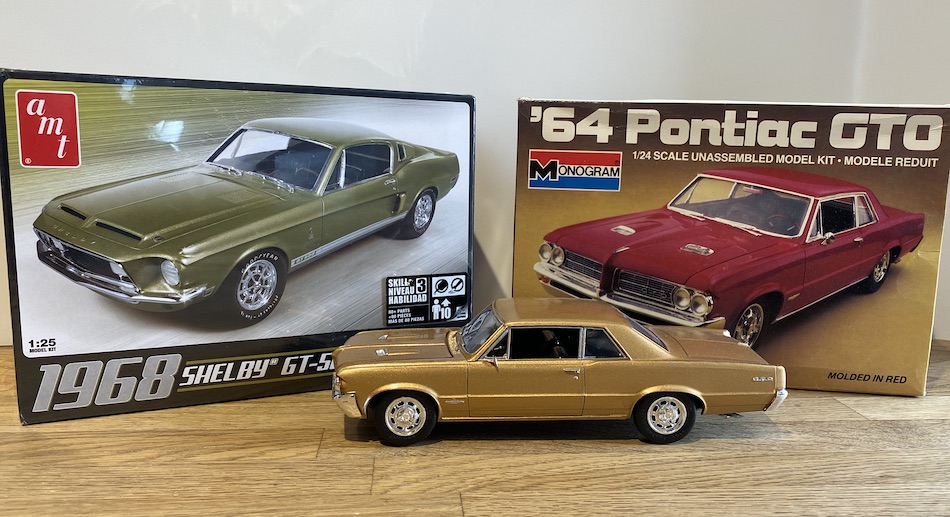
This skill level is recommended for ages twelve and older but can be an enjoyable project for higher skill levels.
This model kit can usually be completed from five to six hours or up to two or three days depending on how detailed you do the painting.
| Type of Painting | Pros | Cons | Skill Level | Approx. Costs |
| Fine Point Brush | Inexpensive | Not Smooth, Tedious | Easy | Starter Kit $25.00 |
| Spray Can | Inexpensive | Odors, Toxic | Medium | $6 to $12 Per Can |
| Airbrushing | Expensive for Good Equip. | Odors, Toxic | Medium to Hard | $150 For a Starter Kit |
| Paint Washes | Medium expensive | Can Have Toxic Odors | Medium to Hard | $30 to $40 For a Wash Paint Kit |
Skill Level Four: More Advanced With More Defined Details
Skill level 4 is suited for experienced modelers and will contain up to one hundred and fifty parts to be glued and painted. The Skill Level four kits are more difficult to assemble, so it is recommended you take the time to read reviews and details on the product.
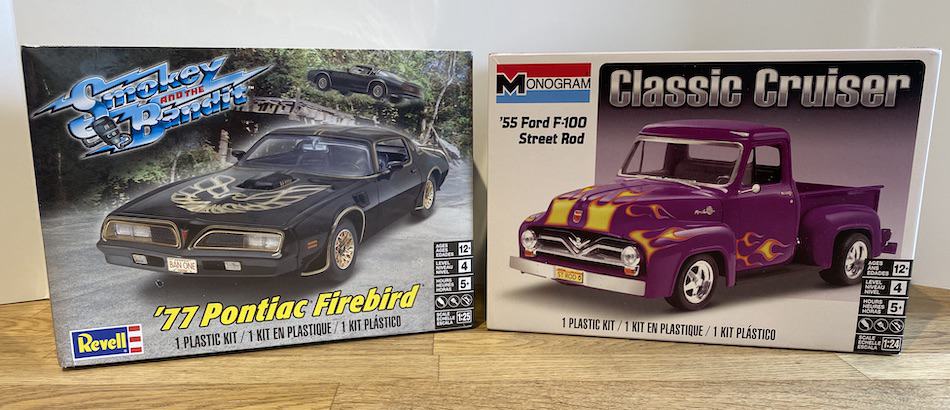
It’s suggested that the builder have some previous model building experience in levels two and three before attempting a skill level four model kit due to the complexity of the assemblies and the possibility of multiple color schemes.
Skill level four kits are advanced kits that offer an appropriate level of detail and authenticity to the builder looking for a challenge. They sometimes include extra parts for the builder to have multiple building options.
Skill level four kits also require gluing or cementing of multiple parts for assembly and feature water-release decals.
This skill level suggests on the box that it is for ages twelve and older but depends mostly on the modelers levels of expertise.
This skill level may take from five hours to up to several days for completion.
Skill Level Five: Still More Advanced for Experts
Skill level five model kits are for expert modelers. They have super-detailed parts, can contain hundreds of pieces, and often have moving parts. They may have working suspensions on cars and motorcycles, rotating propellers on planes, and movable turrets on tanks.
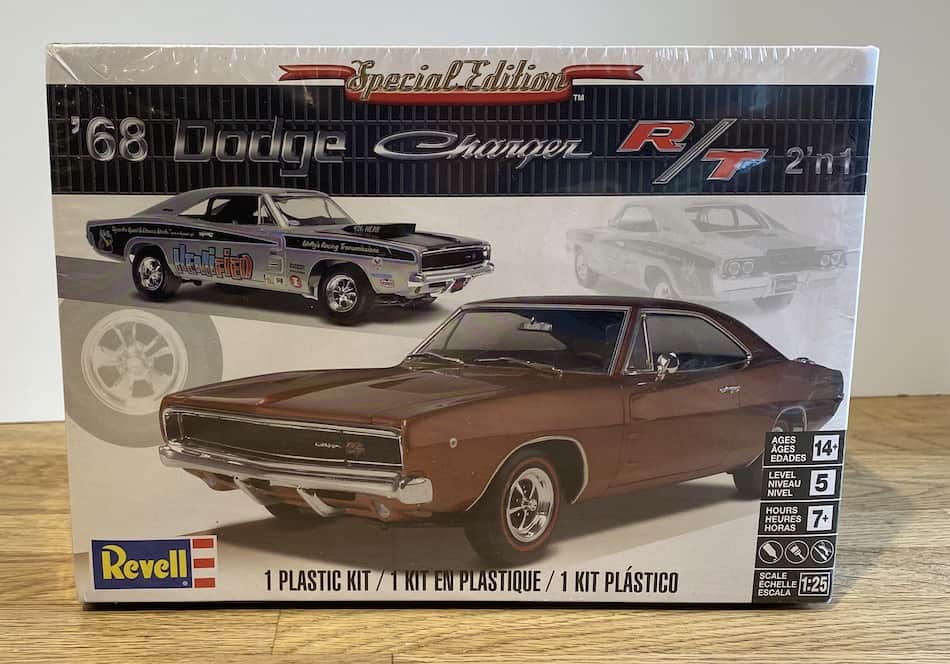
This is the most challenging level, most often having over one hundred and fifty parts to glue and paint. This level often include extra parts for the builder to have multiple building options.
The packaging of this model level reads for ages fourteen and up but may also be determined by the modelers skills and patience.
This level will take from a few days to several weeks to complete depending on the complexity of the kit and the modelers skills.
| Model Kit Details | Skill Level 1 | Skill Level 2 | Skill Level 3 | Skill Level 4 | Skill Level 5 |
| Recommended Age | 6 and up | 10 and up | 12 and up | 14 and up | 14 and up |
| Painting Required | No | Yes and No | Yes | Yes | Yes |
| Glue Required | No | Yes and No | Yes | Yes | Yes |
| Number of Parts Approximately | Up to 50 | Up to 100 | 100 to 150 | 150 to 300 | Unlimited |
| Type Of Decals | Peel & Stick | Water Slide | Water Slide | Water Slide | Water Slide |
Whether you’re an expert modeler or a novice, many of the models you choose to build are the direct result of some special interest in the subject: a favorite car from childhood, or the first car you owned. And being motivated to build is a huge factor in successfully completing a project. (They can) jump into the deep end of the kit-building pool – when their skills have developed to the point where they can tackle building their dream car.
Jim Haught, Scale Auto Magazine Feb 2011
Related Questions
Do you paint or build the model first? If you build the model completely before painting it, it will be harder to paint. If you partially construct the model and then paint it before completing the model it will be much easier to paint.
What do you need to build a model car? Beginning tools and supplies: Hobby knife, paint brushes, rubber-bands, toothpicks, tweezers, spray paint, paint set, paint thinner, model cement, respirator mask. Not all of these supplies are necessary for the first two level skills but will be a good starter kit for future models.
How do you glue model car parts? Beginners can try Testors clear parts cement, a white glue such as Elmers, or crafting glue. These glues all dry clear and they will not craze clear plastic. Advanced modelers can use a variety of specialized cements.
